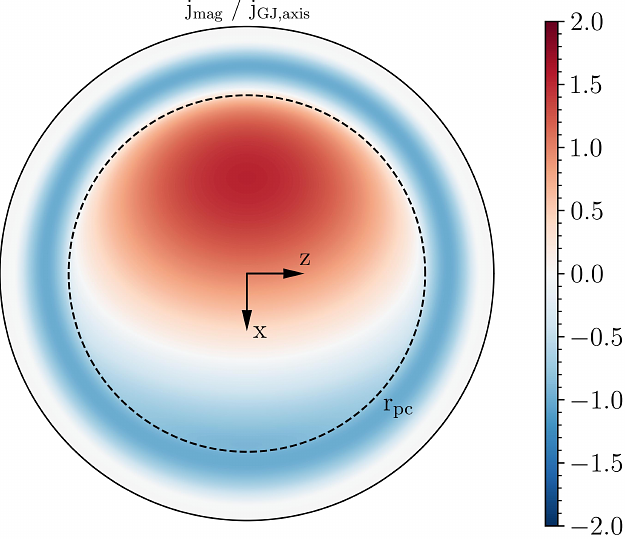On the origin of radio polarization in pulsar polar caps

On the origin of radio polarization in pulsar polar caps
Jan Benáček, Axel Jessner, Martin Pohl, Tatiana Rievajová, Lucy S. Oswald
AbstractA knowledge of polarization properties of coherent radio waves escaping pulsar polar caps is crucial for calculating radiative transfer through the magnetosphere and for obtaining specific predictions of observable radio properties. We describe the pair cascades in the pulsar polar cap, and for the first time, determine the Stokes parameters of the escaping radio waves from first-principle kinetic simulations for a pulsar with an inclination angle of the magnetic axis 60{\deg}. Our model provides a quantitative and qualitative explanation of the observed pulsar radio powers and spectra, the pulse profiles and polarization curves, their temporal variability, the strong Stokes L and weak Stokes V polarization components, as well as the fact that linear polarization decreases with frequency and the non-existence of a radius to frequency relationship. We find that the radio emission from the polar cap can produce a diverse range of observed pulsar properties, including single or double peaked profiles. Most of the Stokes V curves from our simulations appear to be antisymmetric, but symmetric curves are also present at some viewing angles. Although the PA swing of the radiation from the polar cap can be fitted by the rotating vector model (RVM) for most viewing angles, the angles obtained from the RVM do not correspond to the angular distance of the observer from the magnetic axis. Instead, the PA is directly related to the plasma flows in the polar cap and not to the dipole geometry of the magnetic field. The observed range of other polarization features, in addition to our results, can be explained by propagation effects which are not part of the simulation. Our simulations demonstrate that pair discharges determine the majority of its typically observed properties. The usage of RVM for estimations of the magnetic field geometry from observations needs to be reevaluated.